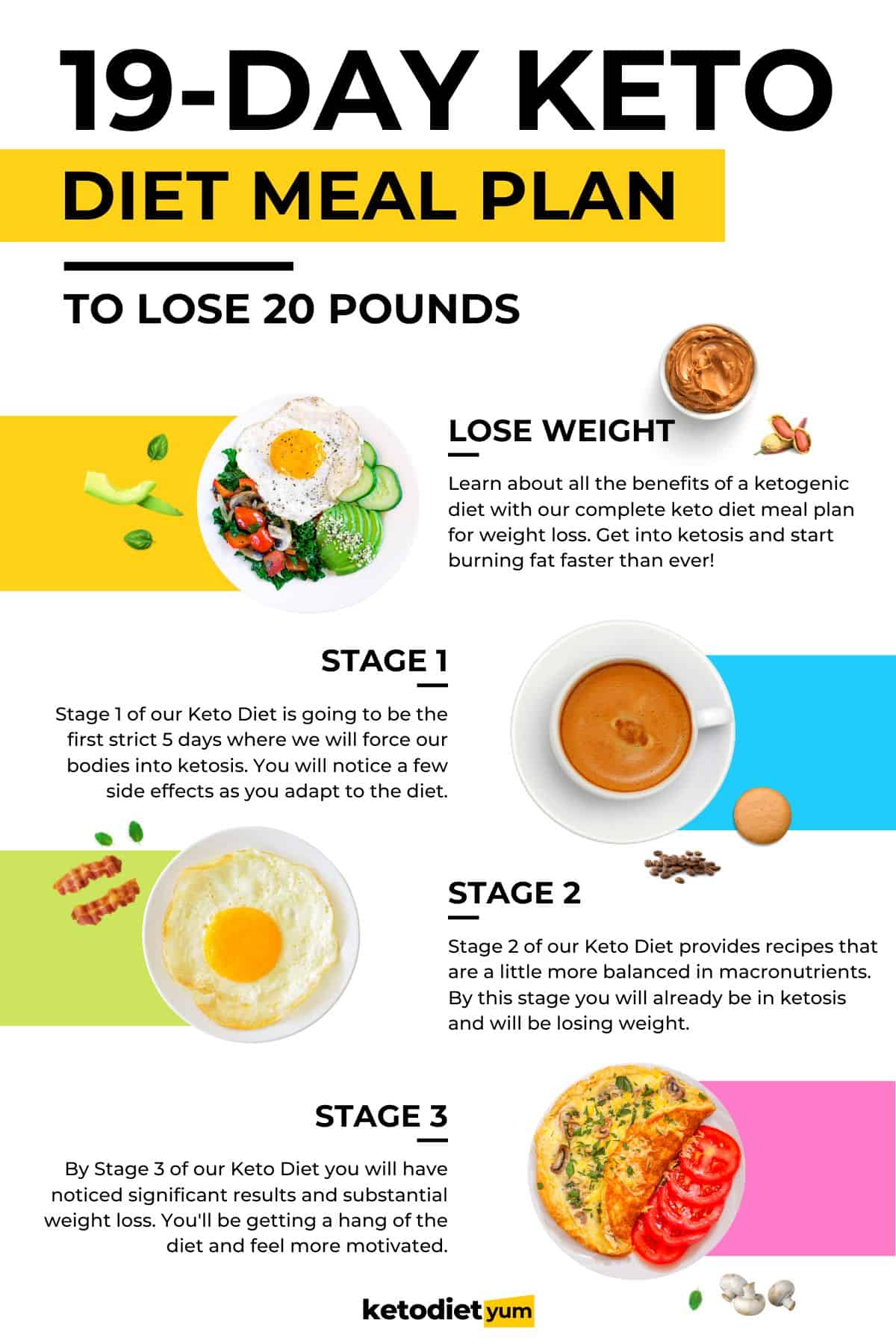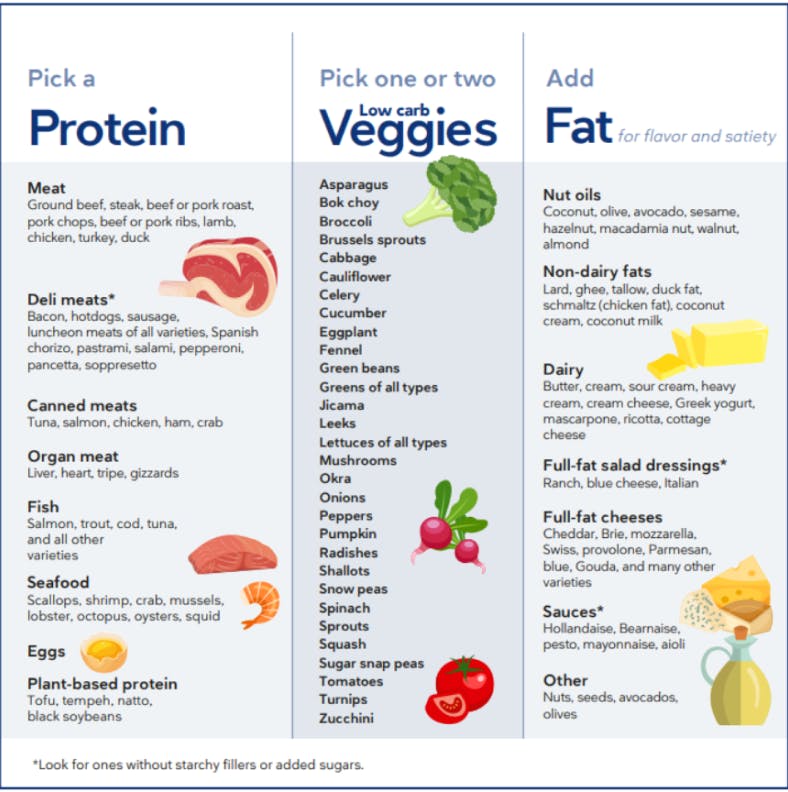The Keto diet is a low-carb, high-fat eating plan that helps the body burn fat for fuel instead of carbohydrates. In recent years, it has gained popularity for its potential weight loss benefits and ability to improve certain health conditions.
If you are new to the Keto diet, this article will guide you through the basics, explaining how it works, what to eat, and possible side effects. By following this beginner’s guide, you can kick-start your journey to achieve ketosis and experience the potential benefits associated with this diet.
So, let’s dive in and learn all about the Keto diet for beginners!

Credit: www.ketodietyum.com
What Is The Keto Diet?
The beginner’s guide to the Keto Diet, a low-carb and high-fat eating plan that aims to induce ketosis in the body. It promotes weight loss and offers numerous health benefits by relying on a diet rich in fats and low in carbohydrates.
The Basics Of The Keto Diet
The Keto Diet, short for the ketogenic diet, is a low-carbohydrate, high-fat eating plan that has gained significant popularity in recent years. The basic premise of the Keto Diet revolves around drastically reducing the intake of carbohydrates and replacing them with healthy fats. By doing so, the body enters a state of ketosis, where it starts using fat as its primary source of fuel instead of carbohydrates. Transitioning to the Keto Diet involves restricting carbohydrate intake to around 20-50 grams per day, which is significantly lower than the average Western diet. This forces the body to break down fat cells for energy, leading to weight loss. Consuming a moderate amount of protein is also important to maintain muscle mass during this process.How The Keto Diet Works
The concept behind the Keto Diet is rooted in the science of ketosis. When the body is deprived of carbs, it is forced to utilize stored fat for energy. This metabolic state activates the liver to produce ketones, which are molecules that fuel the brain and body in the absence of glucose. By following the Keto Diet, the body undergoes a metabolic shift, transitioning from a glucose-powered metabolism to a fat-burning one. As a result, the body becomes more efficient at burning fat, leading to weight loss. Additionally, the Keto Diet has shown potential benefits for managing blood sugar levels and improving insulin sensitivity. While weight loss is a common reason people adopt the Keto Diet, it may also have other benefits. Some studies suggest that the diet can help reduce inflammation, improve mental focus, and enhance energy levels. However, like any diet, it is essential to ensure that you are getting adequate nutrients and consulting with a healthcare professional before making any major dietary changes. In conclusion, the Keto Diet is a low-carb, high-fat eating plan that aims to put the body into a state of ketosis. By restricting carbohydrate intake and increasing healthy fat consumption, the body shifts from using glucose as its primary fuel source to burning fat. This can lead to weight loss and potentially other health benefits. However, it is crucial to approach the Keto Diet with caution and consult with a healthcare professional before making any significant dietary changes.
Credit: www.mypcoskitchen.com
Getting Started With The Keto Diet
Are you ready to embark on a journey towards a healthier lifestyle? The keto diet might be just what you need. This low-carb, high-fat diet has gained popularity for its potential benefits in weight loss, improved mental clarity, and increased energy levels. Getting started on the keto diet can feel overwhelming, but with some guidance and preparation, you’ll be on your way to success. In this article, we’ll walk you through the key steps to begin your keto journey smoothly.
Determining Your Macronutrient Ratios
Before diving into the keto diet, it’s essential to understand and determine your macronutrient ratios. The keto diet is a high-fat, moderate-protein, and low-carb eating plan. To achieve and maintain a state of ketosis – where your body burns fat for energy instead of carbohydrates – you must consume approximately 70% to 75% of your daily calories from fat, 20% to 25% from protein, and 5% to 10% from carbohydrates. Calculating these ratios will help you stay on track and optimize your results.
Transitioning Into Ketosis
The process of shifting your body into ketosis takes time and dedication. Initially, you may experience some side effects known as the “keto flu,” which can include fatigue, headaches, and irritability. Don’t worry; these symptoms are temporary and indicate that your body is adjusting to the new way of burning fuel. To ease this transition, gradually reduce your carbohydrate intake while increasing your fat consumption. Aim for a daily carbohydrate limit of 20 to 50 grams, and focus on healthy fats such as avocados, olive oil, and nuts. Stay consistent, increase your water intake, and be patient – your body will adapt to burning fat soon enough.
Meal Planning And Grocery Shopping
Proper meal planning and grocery shopping are crucial elements of success on the keto diet. When creating your meal plan, focus on incorporating a variety of nutrient-rich, low-carb foods that align with your macronutrient ratios. Stock up on keto-friendly options such as fatty cuts of meat, fish, eggs, non-starchy vegetables, and high-fat dairy products.
When grocery shopping, be mindful of hidden carbohydrates in processed foods and sauces. Reading labels becomes essential to ensure you stay within your daily carb limits. Opt for whole, unprocessed foods whenever possible to maximize your nutrient intake and support your keto goals. Consider creating a shopping list to stay organized and avoid impulse purchases that may derail your progress.
| Protein Sources | Fat Sources | Vegetables |
|---|---|---|
| Chicken | Avocado | Broccoli |
| Salmon | Olive Oil | Spinach |
| Eggs | Coconut Oil | Kale |
| Beef | Butter | Cauliflower |
By planning your meals and shopping smartly, you’ll have everything you need at hand to stick to your keto diet and avoid any setbacks.
Benefits And Potential Side Effects Of The Keto Diet
Embarking on the keto diet can bring about several benefits for beginners, ranging from weight loss and improved body composition to increased energy levels. However, it’s important to be aware of the potential side effects and how to mitigate them. By understanding both the benefits and potential risks, you can make informed decisions and maximize your success with the keto lifestyle. Let’s explore these aspects in detail:
Weight Loss And Improved Body Composition
The keto diet is known for its effectiveness in promoting weight loss and improving overall body composition. By drastically reducing carbohydrate intake and increasing fat consumption, the ketogenic approach encourages the body to enter a metabolic state called ketosis. During ketosis, the body starts utilizing fat as its primary fuel source instead of carbohydrates. This shift in metabolism can lead to significant weight loss, as stored fat is burned for energy. Additionally, the keto diet has been observed to decrease appetite and enhance satiety, making it easier to maintain a calorie deficit and achieve weight loss goals.
Increased Energy Levels
One of the most noticeable benefits of the keto diet is an increase in energy levels. As the body becomes fat-adapted and enters ketosis, it experiences a more stable and sustained energy supply. Unlike the energy spikes and crashes associated with glucose (carbohydrate) metabolism, ketones provide a steady stream of fuel to the brain and muscles. This can result in improved mental clarity, enhanced physical performance, and a reduction in feelings of fatigue. Many individuals on the keto diet report experiencing higher energy levels throughout the day, enabling them to be more productive and active.
Possible Side Effects And How To Mitigate Them
While the keto diet can be highly beneficial, it’s essential to be aware of potential side effects and take appropriate steps to mitigate them. Here are some common side effects and ways to alleviate them:
1. Keto flu: In the initial stages, some people may experience flu-like symptoms, such as headaches, fatigue, and brain fog. This is known as the “keto flu” and is mainly caused by electrolyte imbalances. To alleviate these symptoms, it’s crucial to stay hydrated and increase your intake of electrolytes. Consuming foods rich in potassium, magnesium, and sodium or using electrolyte supplements can help maintain proper electrolyte balance.
2. Digestive issues: Switching to a high-fat diet can lead to digestive issues such as constipation, diarrhea, or indigestion. To prevent or alleviate these problems, it’s recommended to increase your fiber intake by consuming low-carb, high-fiber foods like leafy greens, avocados, and chia seeds. Drinking plenty of water and staying hydrated can also help regulate digestion.
3. Nutrient deficiencies: Eliminating certain food groups, such as grains and fruits, can potentially result in nutrient deficiencies. To mitigate this, it’s important to focus on consuming a variety of nutrient-dense foods while following the keto diet. Including non-starchy vegetables, healthy fats, lean proteins, and low-sugar fruits will help ensure you’re getting a wide range of essential nutrients.
4. Cholesterol and heart health: The high fat content of the keto diet may raise concerns about cholesterol levels and heart health. While some studies suggest that the keto diet can increase levels of “good” HDL cholesterol, it may also elevate “bad” LDL cholesterol in some individuals. To address this, it’s advisable to prioritize healthy fats like avocados, nuts, seeds, and olive oil, while moderating intake of saturated and trans fats.
By being mindful of these potential side effects and implementing strategies to address them, you can minimize any discomfort and maximize the benefits of the keto diet.

Credit: www.dietdoctor.com
Frequently Asked Questions Of Keto Diet For Beginners
How Do I Start My Keto Diet For The First Time?
To start your keto diet for the first time, follow these 5 guidelines: 1. Limit carbs to 20 grams per day. 2. Focus on healthy fats like avocado and olive oil. 3. Consume moderate amounts of protein. 4. Include low-carb veggies in your meals.
5. Drink plenty of water and stay hydrated.
What Are The Basic Rules Of A Keto Diet?
The basic rules of a keto diet are: 1. Limit carbohydrate intake to less than 50 grams per day. 2. Increase consumption of healthy fats. 3. Moderate protein intake. 4. Avoid processed foods and sugars. 5. Stay hydrated and maintain electrolyte balance.
How Do Beginners Get Into Ketosis?
To get into ketosis as a beginner, follow a low-carb, high-fat ketogenic diet. Limit your carb intake to 20-50 grams per day and increase fats from sources like avocados, nuts, and oils. This will force your body to switch from using carbs for energy to burning fat instead.
Stick to the plan and allow a few days for your body to adjust.
How Does The Keto Diet Work For Beginners?
The keto diet works for beginners by limiting carb intake and increasing fat consumption, putting the body into a metabolic state called ketosis. In this state, your body burns fat for energy instead of carbs, leading to weight loss. It also helps control blood sugar levels and improves mental focus.
Conclusion
To wrap up, the keto diet is an effective way for beginners to achieve weight loss and improve overall health. By restricting carbohydrates and increasing healthy fats, this diet promotes the state of ketosis, where your body burns fat for fuel.
However, it’s crucial to consult with a healthcare professional before starting any new diet. Remember to listen to your body, stay hydrated, and prioritize nutrient-dense foods for long-term success on the keto journey.
